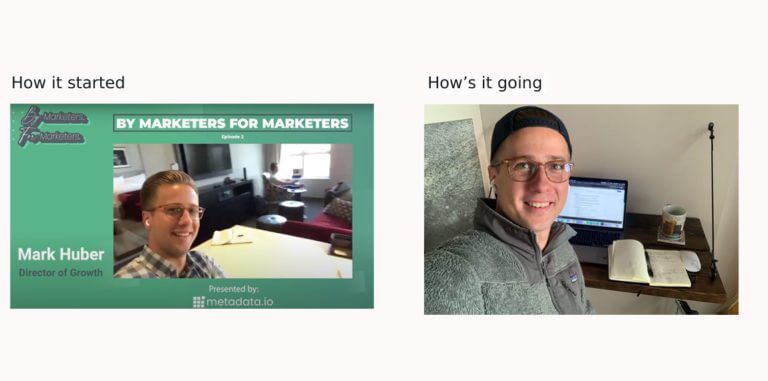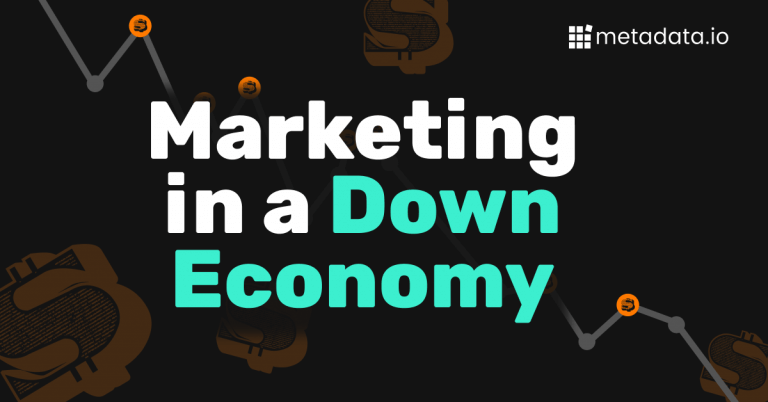Mark Huber: Why I Joined Metadata
This blog post is about five weeks late
Turns out there’s quite a bit of work to do when the Marketing team hires one person and doubles its headcount.
These last three months have been awesome. I’ve been overhauling our messaging, testing new channels and listening to as many call recordings as I can.
Pro tip: if you’re ever in need of a good laugh, you can turn up the speed to 2x on call recordings and make every speaker sound like Rick Moranis in Spaceballs.

I joined Metadata for three reasons:
- Wanting to be a part of a start-up that’s changing B2B marketing
- Knowing who I’m marketing to
- Believing in the product I’m marketing
Wanting to be a part of a start-up that’s changing B2B marketing
We’ve all seen the MarTech landscape graphic.
And we’re all continually amazed at how much more crowded that graphic gets, as year after year, there are more tools and more categories. It somehow grew by 13.6% in 2020.
B2B marketers don’t need more tools at the end of the day. B2B marketers need to deliver results.
The better B2B marketers know how to get the most out of their existing tools and investments. And the best B2B marketers know when it’s time to consider new tools that will help them deliver more substantial results.
Metadata is changing the way B2B marketers think about demand generation.
Whether it comes to audience building, campaign experimentation, or seeing which experiments generate pipeline and revenue, the Metadata platform is different from the traditional ABM platforms we’re typically grouped together with.
And that’s something I wanted to be a part of.
We’re on a mission to move B2B marketers away from measuring the impact of their campaigns using reach and engagement, and towards real outcomes like pipeline and revenue generated.
Knowing who I’m marketing to
It’s difficult to get to know your target audience. It’s especially hard to understand what random work thoughts keep them up at night and figure out why they drag their feet when buying software.
But depending on the industry and how curious you are, figuring out your audience can be fun.
And it always takes time.
The best part about my role (and all the work that lies ahead) is I know our target audience. Very well actually.
I know our target audience because just a few months ago, I was in our target audience as a Director of Demand Generation.

I know what it’s like to be on the hook for pipeline and revenue contribution numbers.
I know what it’s like to put together top-down and bottom-up demand generation plans so you know what you need to do to hit your number.
And I know what it’s like to have your budget cut by 50% during a global pandemic, when the targets remained the same.
I’ve walked in your shoes before. I can relate to the struggles that come with being in demand generation and marketing operations.
Empathy is missing in B2B marketing. And showing real empathy in our marketing is what’s going to make us different.
Believing in the product I’m marketing
It’s always been a dream of mine to work in marketing for a marketing software start-up… but only if I believed in the product.
I figured an opportunity like this would come later in my career, and thankfully I was wrong.
Towards the end of 2019, my old boss asked me to research and pick an ABM platform to help us meet our pipeline and revenue contribution numbers as a marketing team.
Seeing that I had just led a similar evaluation and purchased an ABM platform at another company in 2018, the easy (and time-saving) move would have been to go with what I knew.
But easy moves aren’t always the right moves.
Rather than start with the Forrester Wave report for ABM platforms and shortlist the top three companies (you know – the safe way to pick a tool that usually doesn’t put a target on your back), I looked for the companies I didn’t know much about.
And Metadata was one of the first companies I looked at.
Fast forward a few weeks through the sales cycle, and it wasn’t long before I officially became a new Metadata customer. It was also the first time I’d ever enjoyed being sold to, because it felt like a conversation and wasn’t having a product pushed onto me. Thanks Logan!
I used the Metadata platform for close to eight months in my previous role and was blown away at the audience building, experimentation, and lead enrichment capabilities.
I never knew a tool like this existed. A tool that could help me generate qualified leads within my target account list–the types of leads that convert to pipeline and revenue.
You know, the real metrics your boss and your boss’ boss actually care about.
I joined their customer advisory board in the process, met the people behind the product and even gave feedback on the roadmap to help inform what comes next.
So when Jason mentioned he was looking to hire the #2 marketer at Metadata, I couldn’t throw my name in the hat fast enough.
And I couldn’t be happier it worked out.
Mark Huber, Director of Growth


